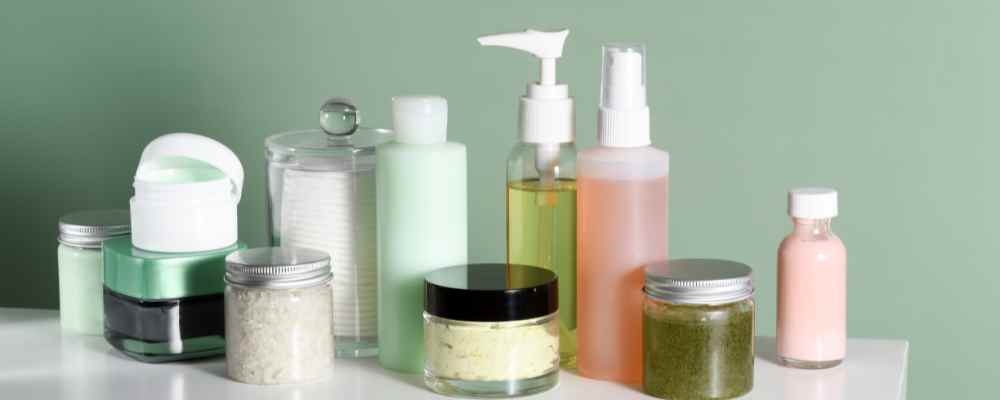Most people talk about the perfect skin care product for your skin type, but not many talk about harmful ingredients. But we will since skincare reflects directly on your well-being.
You may not know this, but skincare is paramount in your daily health journey, and good skin care is excellent for a better and happier you. Do you want to stay radiant? You need the perfect ingredients for your skin, and one way to know the perfect ones is to understand how to avoid the bad ones.
The Environmental Working Group reveals that, on average, American women use up to 168 ingredients for their daily skincare routine. This is why you must step up your bad ingredient identification game and always gun for the best ones, ideally from natural sources.
Just as you've guessed, most lousy skin care products are artificially produced. This is why you should shop for natural skin care products from notable brands that can be trusted. Keep reading the article and let's expose ten ingredients to avoid in skin care.
10 Worst Skin Care Ingredients to Avoid
Let's list 10 worst skin care ingredients - they are more common than you think in your daily essentials collection!
1. Synthetic fragrance
A rich and inviting smell is an allure for most women (I know it is for you, too), but you may have to step on the brakes when a synthetic fragrance is involved.
Why is this? They have been proven harmful to your skin's health, regardless of skin type. They contain substances linked by the Food and Drug Administration to skin allergies. And I trust you already see how laughable it is to have a skin irritant in a skin care product.
Another tricky aspect you may need to learn about synthetic fragrances is that their use is not controlled by the FDA. This is mainly because manufacturers reserve the right to disclose the actual ingredients of their scents since they are classified as "trade secrets." They have the potential to be irritants, endocrine disruptors, and carcinogens. So it's time to convert to fragrance-free goods!
This doesn't mean you should swear off skin care products with amazing scents. Nope. Nothing like that. You must pick your scents, knowing that natural ones are always better and purer. You can get essential oils that are a healthier option for fragrance because they are derived from organic materials like flowers.
Synthetic fragrances are found in skin care products such as moisturizers, shampoos, cleansers, and conditioners, so you best watch out.
2. Phthalates
If you are still wondering which ingredients are not suitable for your skin, phthalates are one ingredient to avoid in skincare.
In scientific lingo, phthalates are a group of plasticizing compounds, including DBP, DEHP, and DEP.
But for your quick understanding, know that they essentially cause the perfumes in your skin care products to cling to your skin or make the product more pliable, which is really bad for skin care. Numerous studies show that this family of chemicals is hazardous to bodily organs and disturbs the endocrine system (both reproductive and nonreproductive). They can also result in birth abnormalities if it isn't enough.
While the Food and Drug Administration continues to monitor its use, the European Union has already taken action to ban this class of chemicals from being used in cosmetics and skincare products. This action ought to prompt you to consider the toxic nature of this skin care product.
Additionally, just like for fragrances, there is a significant flaw in the FDA's listing standards, even though manufacturers must list this substance. Why? You may have skin care products that include one or more phthalates that aren't stated because this component family is utilized in perfumes, and fragrance ingredients are regarded as "trade secrets." They are most frequently found in soap, shampoo, deodorant, body lotion, nail polish, hairspray, and aftershave lotion, so be on the lookout—or save yourself the stress by shopping for only natural skin care products.
3. Coal tar
Coal tar is one skincare product you may not want to consider dangerous right off the bat. This is because it treats skin conditions such as eczema, psoriasis, seborrheic dermatitis, and others. It is a viscous, light-colored liquid with a distinct fragrance in its natural state. Coal tar is known to contain around 10,000 different chemicals. Instant red flag, right? There’s more. It is a heavy substance that weighs down the skin. This irritates the skin, resulting in acne and allergy outbreaks.
According to studies, coal tar may increase the risk of cancer. This is why manufacturers only use small amounts to make cosmetics “safe” for human use. But riddle me this: how “safe” is a little poison?
4. Talc
Talc has gained notoriety as one of the worst skincare ingredients due to a range of concerning factors. One of the primary concerns is its potential to be contaminated with asbestos, a known carcinogen, as talc deposits are often found alongside asbestos deposits in nature. Although cosmetic-grade talc is supposed to be asbestos-free, the regulation and monitoring of this aspect have been inconsistent, raising doubts about its safety. There has been studies showing the link between talc and ovarian cancer, and even lawsuits against Johnson & Johnson for its asbestos-laced talc products.
Moreover, talc is a highly absorbent substance that can clog pores and exacerbate skin conditions such as acne and dermatitis, making it unsuitable for individuals with sensitive or acne-prone skin. Its fine particles, when inhaled, can pose respiratory risks as well. Overall, the potential health risks and its tendency to aggravate skin issues make talc a questionable choice for skincare products.
5. Lead
Not all things in nature are friendly. You must know that from plants like poison ivy. Well, watch out for lead too. Although lead is a naturally occurring element, it can also be found as an impurity in skin care products, including body lotion. While the Food and Drug Administration is still striving to regulate cosmetics with "unsafe" amounts of lead, no safe blood lead threshold has been determined. Additionally, there is compelling evidence that lead is carcinogenic. High lead levels can harm a person's nervous system, blood, and kidneys.
The bottom conclusion is that this is one of the most crucial elements for skin care to avoid! The use can be hazardous in skin care products and other products containing lead.
The cosmetic products that contain it most frequently are lipstick, eye shadow, blush, compact powder, shampoo, and body lotion.
6. Oxybenzone
Whether you’re new to skincare or you know the basic skincare routine off the top of your head, then you must have heard of sunscreens. But do you know if your sunscreen is even worse than the glare of the sun?
The most effective application of oxybenzone (also known as benzophenone-3 or BP-3) is as a sunscreen component. It is used to stabilize and strengthen the color and aroma of cosmetic products. It is also frequently found in conventional lotion sunscreens and makeup foundations with an SPF and absorbs UV Beta and UV Alpha radiation. Oxybenzone readily dissolves into creams and lotions, creating a solution that is quickly absorbed and shields the skin from the sun.
The benefits outweigh the risks, however, since it has been discovered that oxybenzone causes severe skin allergies, rashes, and irritation. One of the main worries is that oxybenzone is quickly absorbed by the body. This absorption may build up in the body, possibly reaching toxic levels that could impact the endocrine system by interfering with hormones. According to studies, it mimics the estrogen hormone and may contribute to diseases like skin and breast cancer.
7. Parabens
Skincare products also contain preservatives, and parabens are one of them. It's just more toxic than you may imagine. Manufacturers utilize a group of preservatives called parabens, which include methylparaben, isobutylparaben, propylparaben, and others, in skin care products to help stop the formation of bacteria and mold.
You can identify them in a wide range of goods, including soaps, lotions, and cosmetics. According to research, they disrupt reproductive and mental processes and boost the production of the female sex hormone, which causes excessive breast cell proliferation. This ultimately results in breast cancer.
8. Formaldehyde
Are you looking for an absolutely terrible skincare ingredient? Then we have one for you: formaldehyde. Formaldehyde can be found in lotions and makeup. It might also be present as a preservative in your other skincare products.
According to research, this is a recognized carcinogen. Additionally, it has been associated with asthma, neurotoxicity, developmental toxicity, and general skin, eye, and lung irritation. Likewise, it is a known contaminant in various preservatives that may be mentioned as constituents in your own products, including quaternium-15, DMDM hydantoin, imidazolidinyl urea, diazolidinyl urea, sodium hydroxymethylglycinate, and bronopol (2-bromo-2-nitropropane-1,3 diol).
It can be found in products such as body wash and bubble baths. Please stay away from products containing formaldehyde—they are too much trouble.
9. Sodium lauryl sulfate (SLS)
Different ingredients are included in skin care products for various reasons. In the case of SLS, it is because of its surfactant properties.
SLS is the chemical responsible for transforming a squirt of body wash into a silky lather. Basically, this chemical's function is to produce bubbles. This indicates that it holds dirt and facilitates rinsing. When applied, this creates a rich lather that feels clean and fresh. It is made up of non-volatile alcohol and is considered a valuable ingredient until you learn about the risk. Some of its various applications include skin-conditioning agents, solvents, synthetic detergents, emulsifiers, and anionic surface-active agents.
Amusingly, SLS is one of the substances in skincare products that irritates the skin the most. According to studies, it is a recognized irritant to the skin and eyes. SLS can result in redness, allergies, and dry, flaky skin. According to another study, some subjects exposed to SLS for 24 hours had skin water loss, alterations to the skin barrier, and other inflammation-related symptoms.
When applied, this abrasive detergent strips your skin's natural oils. The results include dermatitis, dandruff, and other skin conditions. SLS can have adverse effects, especially if you have sensitive skin.
10. Drying Alcohol
Given how frequently alcohol is utilized in the skin care industry, you may be stunned to discover that it is actually a lousy ingredient for skincare. However, not all alcohols are bad for you. The alcohols in concern are what are known as "drying" alcohols. Some people could assert that skin harm from products containing these "drying" alcohols is unfounded because they produce results.
The truth is alcohol application over an extended period eats away at the skin's surface, leaving the skin dry and brittle. This unneeded stress on the skin will prevent it from renewing itself, resulting in undesirable skin conditions.
There are suggestions on the market that alcohol should be used by people with oily skin because these skincare products promise to stop pimples brought on by oily skin. However, most people discover that their skin's imperfections worsen rather than improve due to the alcohol's harm.
Examples of drying alcohols used in skincare include SD alcohol, isopropyl alcohol, denatured alcohol, ethanol/ethyl alcohol, methanol/methyl alcohol, propanol/propyl alcohol, C alcohol, methylated spirit, and denatured rectified spirit.
Conclusion
How that you know all about bad skin care products, it's time to do away with products that contain harmful ingredients and jump on the natural skincare wagon today.


